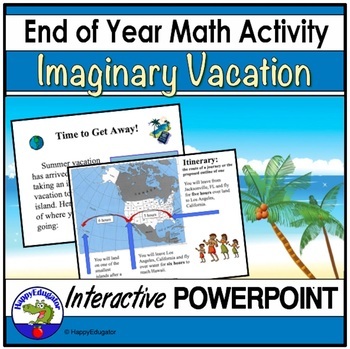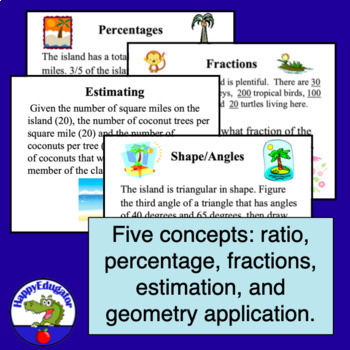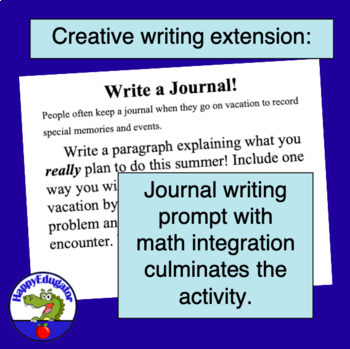End of Year Activity Interactive Math PowerPoint - Word Problems
- PPTX
- Microsoft OneDrive
Description
End of Year Activity Math PowerPoint. Take an imaginary vacation and solve the word problems along the way in this digital resource. Great fun for the end of the year! PowerPoint takes students on an end of the year imaginary summer vacation to the tropical island of Hawaii, where they will complete a variety of activities involving concepts such as ratios, fractions, decimals, percentages and geometric interpretation. The five activities culminate in a writing activity for their math journal where they will have to connect math to the real world. Animation will keep students engaged, and a slide with the answer follows each activity so students can check and get immediate feedback. Editable for your classroom use. 15 slides.
Did you know that you can use PowerPoints like this in video conferencing or Zoom for remote learning? You can share with your students in OneDrive and in Microsoft Teams, too. Just view in Slideshow mode. You can also upload to Google Drive and save as Google Slides, and it will automatically convert, and you can use it in Google Classroom. It is editable and easy to make adjustments if necessary.
Please see full preview.
You may also like:
End of the Year Good-bye Cards
End of the Year Speech Assignment
Summer Camp Award Certificates
Middle School Reading Lists for Grades 6-8
Summer Reading List Grades 7 - 8
Follow me HERE to get notified of updates, sales, free resources, and new products. All new products are 50% off for 48 hours.
© Deborah Hayes aka HappyEdugator. For classroom and homeschool use. Your purchase buys one license. You may purchase extra licenses at a discount.





